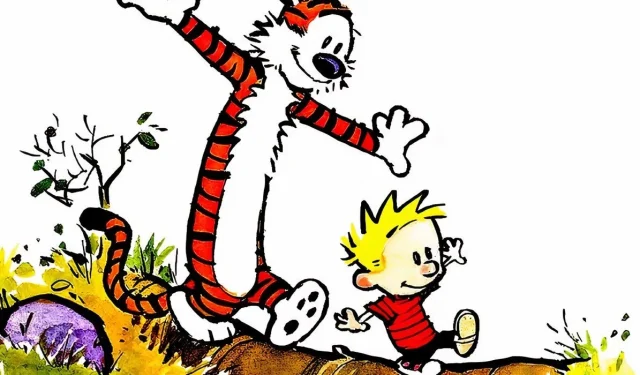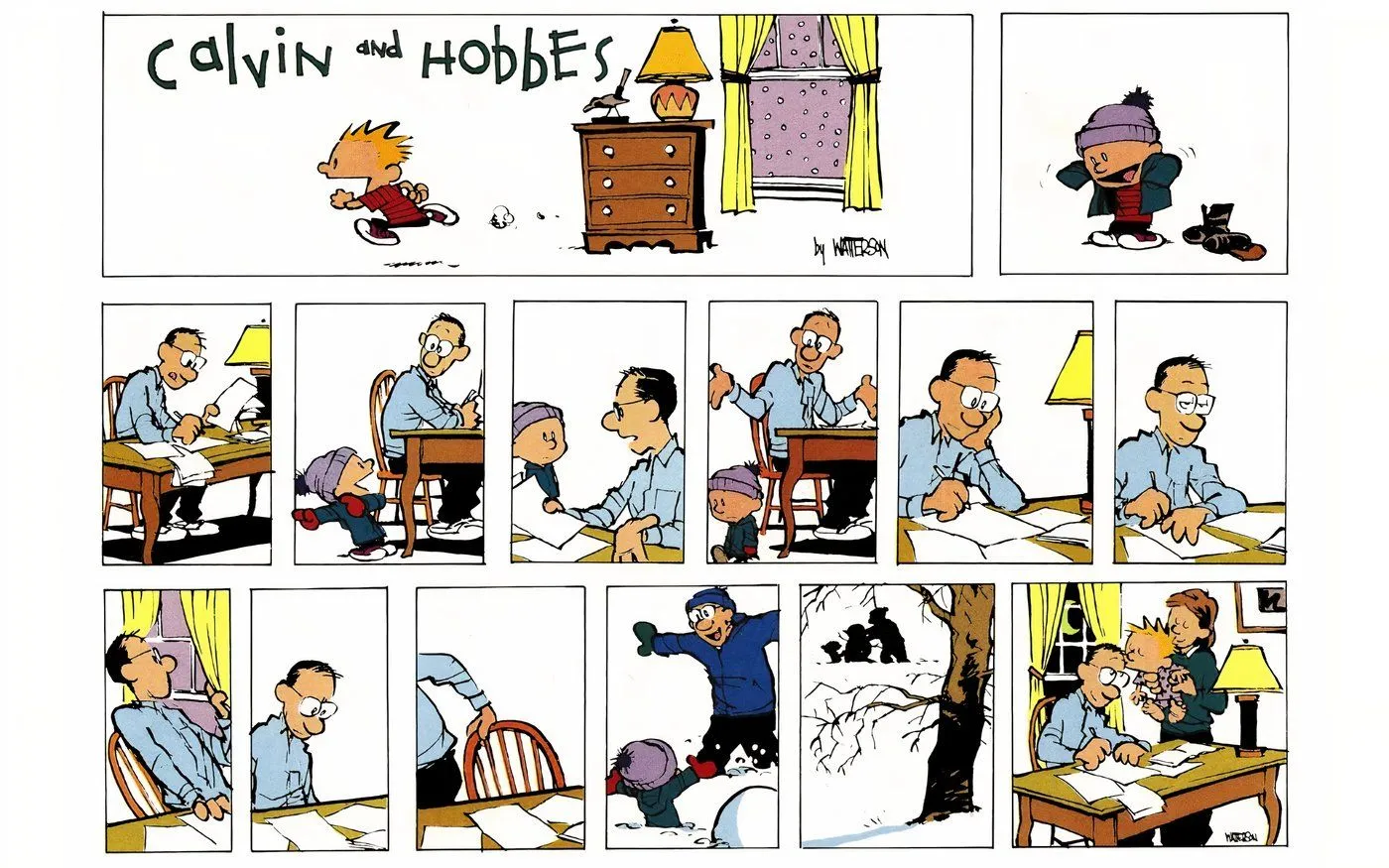
Calvin and Hobbes stands out as one of the most beloved and humorous comic strips, renowned not only for its witty characters but also for its profound insight into childhood experiences—both joyful and challenging. The strip captures a range of emotions, depicting carefree moments alongside the more serious aspects of growing up, such as education, responsibilities, and the constraints of daily life.
One of the most cherished elements of the comic is its portrayal of children’s exuberance for outdoor play. The six-year-old protagonist, Calvin, along with his stuffed tiger companion Hobbes—who may or may not be imaginary—embarks on various imaginative adventures, from playing their unique game Calvinball to spending hours simply exploring the woods that surround Calvin’s home. Through their interactions, readers are invited to relish the wonders of nature seen through the curious eyes of a child. Below are ten memorable Calvin and Hobbes comics that beautifully illustrate this bond with nature.
10 Calvin’s Love of Nature has Made Him Lose Faith in Humanity (on a Cosmic Scale)

On a peaceful walk through the woods, Calvin and Hobbes take in the serene beauty surrounding them. This moment prompts Calvin to reflect on a troubling fact—that numerous species face extinction due to human activities destroying forests worldwide. This realization leads him to conclude that if intelligent extraterrestrial life exists, they wisely choose not to contact humanity.
Having become aware of the detrimental impacts humans impose on nature, Calvin’s outlook on humanity’s future dims. He believes that if aliens do see the state of Earth, they would avoid contact entirely, further emphasizing his disillusionment.
9 Hobbes Convinces Calvin that Happiness Can Be Found in Nature

In a sunlit field, Calvin poses an intriguing question to Hobbes: if he could wish for anything in the world, what would it be? Hobbes replies that he would wish for nothing more than to enjoy the sunny field they are presently in. Calvin, initially baffled, argues that Hobbes should aspire for something grander—wealth, fame, or anything beyond their current happiness.
However, Hobbes demonstrates that true contentment can be found in life’s simplest moments, leading Calvin to reconsider his perspective on happiness and ultimately embrace the joy of being present in nature.
8 Calvin and Hobbes Learn to Appreciate the Good, Even with the Bad

As they stroll outdoors, Hobbes expresses his love for the fall season, appreciating its crisp weather and gentle light. Calvin, always the realist, points out that fall merely signals the impending arrival of winter and lamenting its transient nature. Hobbes counters this by arguing that the ephemeral nature of good things enhances their value.
This exchange encourages Calvin to recognize that while seasons change, each moment carries its own beauty that deserves appreciation, fostering a deeper respect for the natural world.
7 Calvin and Hobbes Take Advantage of a Fresh Snowfall

One winter morning, Calvin and Hobbes are thrilled to discover a blanket of fresh snow covering the ground. Seizing the moment, they rush to grab their sled, excitedly discussing the joys of the great outdoors. Their exuberance symbolizes hope and endless possibilities, reminiscent of fresh starts.
This snow-filled adventure also marks the final comic strip ever published, leaving readers with a poignant reminder of joy and the wonder of nature viewed through the innocent lens of childhood.
6 Hobbes Teaches Calvin How to Appreciate Nature’s Beauty without Compromising It

Calvin rushes to show Hobbes a butterfly he has caught in a jar, eager to admire its beauty. Although Calvin means well, Hobbes expresses his discontent, remarking, “If people could put rainbows in zoos, they’d do it.”This prompts Calvin to reconsider his actions and ultimately set the butterfly free.
This lesson from Hobbes instills in Calvin the understanding that the truest appreciation of nature is to observe its beauty without hindering its existence, fostering a message of respect for the environment.
5 Calvin and Hobbes Contemplate the Nature of Life After Seeing a Dead Bird

During a walk, Calvin and Hobbes stumble upon a lifeless bird on the ground. Calvin reflects on the bird’s delicate beauty and realizes that he might not have fully appreciated it had the bird been alive. This encounter leads to philosophical musings about life’s fleeting nature and the tendency to value things only after they’re gone.
Calvin ponders why people often overlook such reflections in their daily lives, arriving at the stark realization that death is a common avoidance, yet he and Hobbes find unexpected beauty even in the harsh realities of life.
4 Hobbes Keeps Calvin from Becoming the Very Thing He Despises Most

In a whimsical journey to Mars, Calvin and Hobbes enjoy the unspoiled beauty of the planet, far removed from the chaos of Earth. Yet, in this idyllic setting, Calvin carelessly drops a candy wrapper, prompting Hobbes to chide him for littering, reminding him of his critical views on human pollution.
This comic strip serves as a powerful reminder that even those who critique humanity’s impact on the environment can unwittingly contribute to it, emphasizing the importance of personal responsibility in preserving nature.
3 Calvin and Hobbes Uses Sarcasm to Highlight the Beauty of Nature

As they sit lakeside, admiring a breathtaking sunset, Calvin sarcastically remarks that he misses out on “great TV shows.” This quip emphasizes the sheer brilliance of the natural beauty in front of him, highlighting that no television program could ever compare to the awe of nature.
Through this clever sarcasm, the comic encourages readers to seek out their own natural experiences, away from screens and distractions, prompting a renewal of appreciation for the world outside.
2 Calvin’s Dad Decides Work Can Wait to Play Outside with Calvin

As snow begins to fall, Calvin eagerly asks his dad to join him outside for some winter fun. Initially, his father declines due to work commitments, leaving Calvin to enjoy the snow alone. However, moments later, Calvin’s dad realizes the importance of seizing the moment and joins his son to build an unforgettable snowman together.
This sweet moment conveys a vital lesson about prioritizing cherished relationships, as Calvin’s dad opts for quality time with his son over mundane work matters, demonstrating the fleeting nature of childhood and the importance of carving out time for joy.
1 Calvin and Hobbes Take In the Cosmic Wonders of the Night Sky

On a serene night, Calvin and Hobbes lie outside, gazing up at the starry sky. Calvin suggests that if people spent more time contemplating the stars, the world might be a better place. When Hobbes inquires about this perspective, Calvin responds, “When you look into infinity, you realize that there are more important things than what people do all day.”
This profound insight reflects Calvin’s optimism and highlights how viewing the vastness of the universe can shift one’s priorities. Although most people may overlook this perspective, Calvin exemplifies a deep appreciation for nature’s grandeur and its capacity to inspire humility.
This comic serves as a fitting capstone to the exploration of the themes of nature and childhood present in Calvin and Hobbes.




Leave a Reply